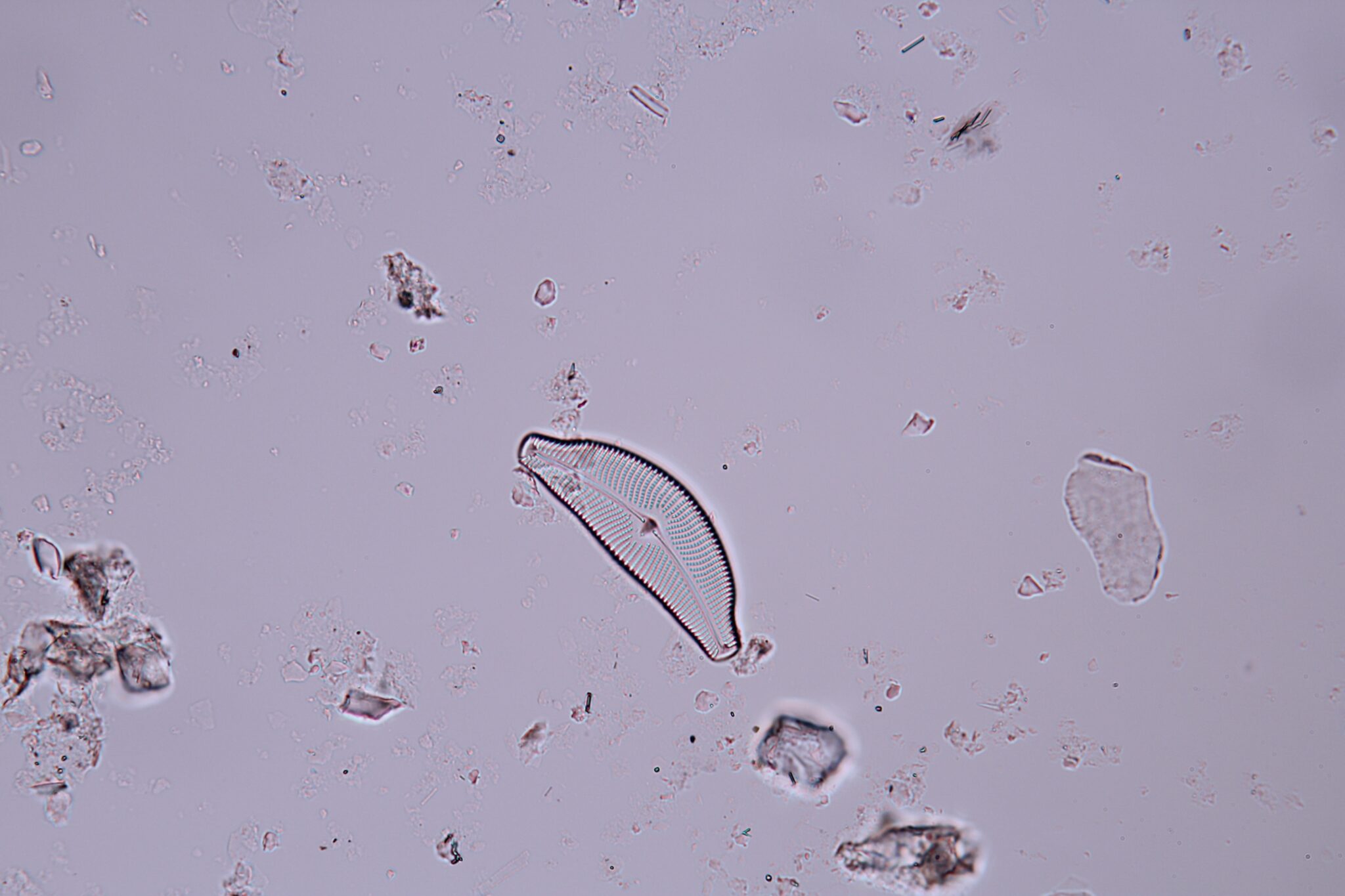Diatoms and ecological water quality


Diatoms are a group of unicellular algae that are characterised by their structure. Their cells consist of silicon dioxide, which forms a shell or frustule. They live mainly in aquatic environments, but can also occur on land under humid conditions. They can occur in the water column or on substrates (as encrustations) and are therefore divided into planktonic and benthic diatoms.
The composition of the community and the abundance of the individual diatom species depend largely on the quality of the water in which they occur. This makes them reliable indicators of ecological quality, which are used in many countries within a framework defined by the EU Water Framework Directive.
The assessment of ecological quality at the Josip Juraj Strossmayer Water Institute is conducted in accordance with the monitoring plan for surface waters, which includes the monitoring of biological quality elements.
In order to carry out an ecological quality classification, it is necessary to identify or determine the species present in the sample taken. Identification can be very challenging as the systematics of diatoms, i.e. their categorisation into specific genera and species, is a very dynamic process. In addition to the ongoing discovery and identification of new species, the taxonomic affiliation of already known species can also change. Some species are placed in completely new genera, while others remain in the same genera but their species names are changed.
For this reason, continuous communication among diatomists and ongoing education are essential for more accurate identification. To this end, staff from the Water Institute took part in the “14th European Diatom Meeting” symposium in Meise (Belgium) in May this year, where this topic was discussed and many new findings on diatoms were presented.
The application of newer systematics is very important to ensure that the composition of the communities in the analysed samples remains as reliable as possible in the long term. Newly discovered species are assigned indicator values that allow for a revision of previous assessments of ecological quality. In this way, direct anthropogenic influences and the effects of climate change can be identified, on the basis of which appropriate measures can be taken to protect surface waters.
According to the biological monitoring of surface waters conducted in Croatia to date and the results of diatom analyses, the ecological quality status of most water bodies was assessed as good or very good.